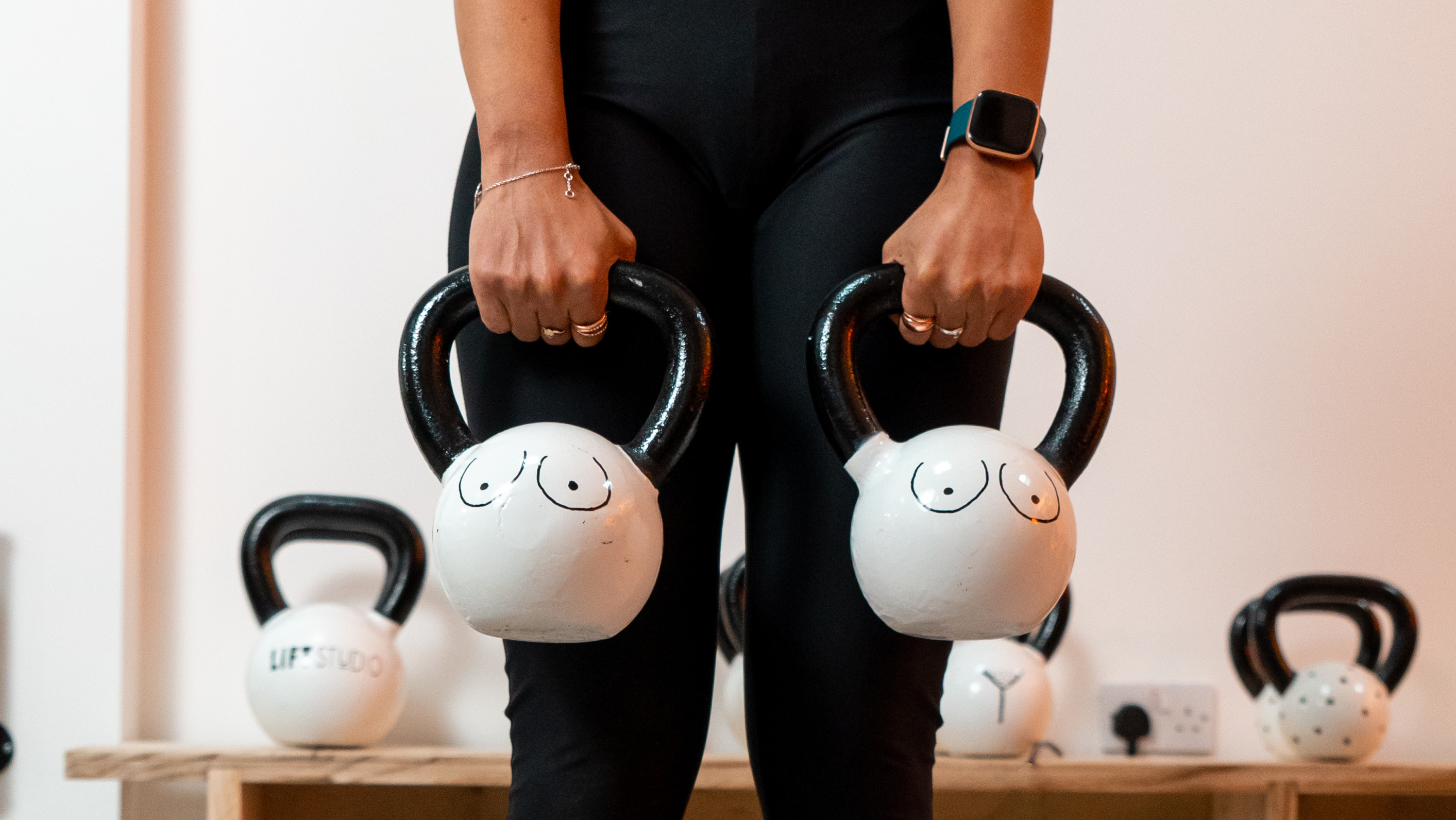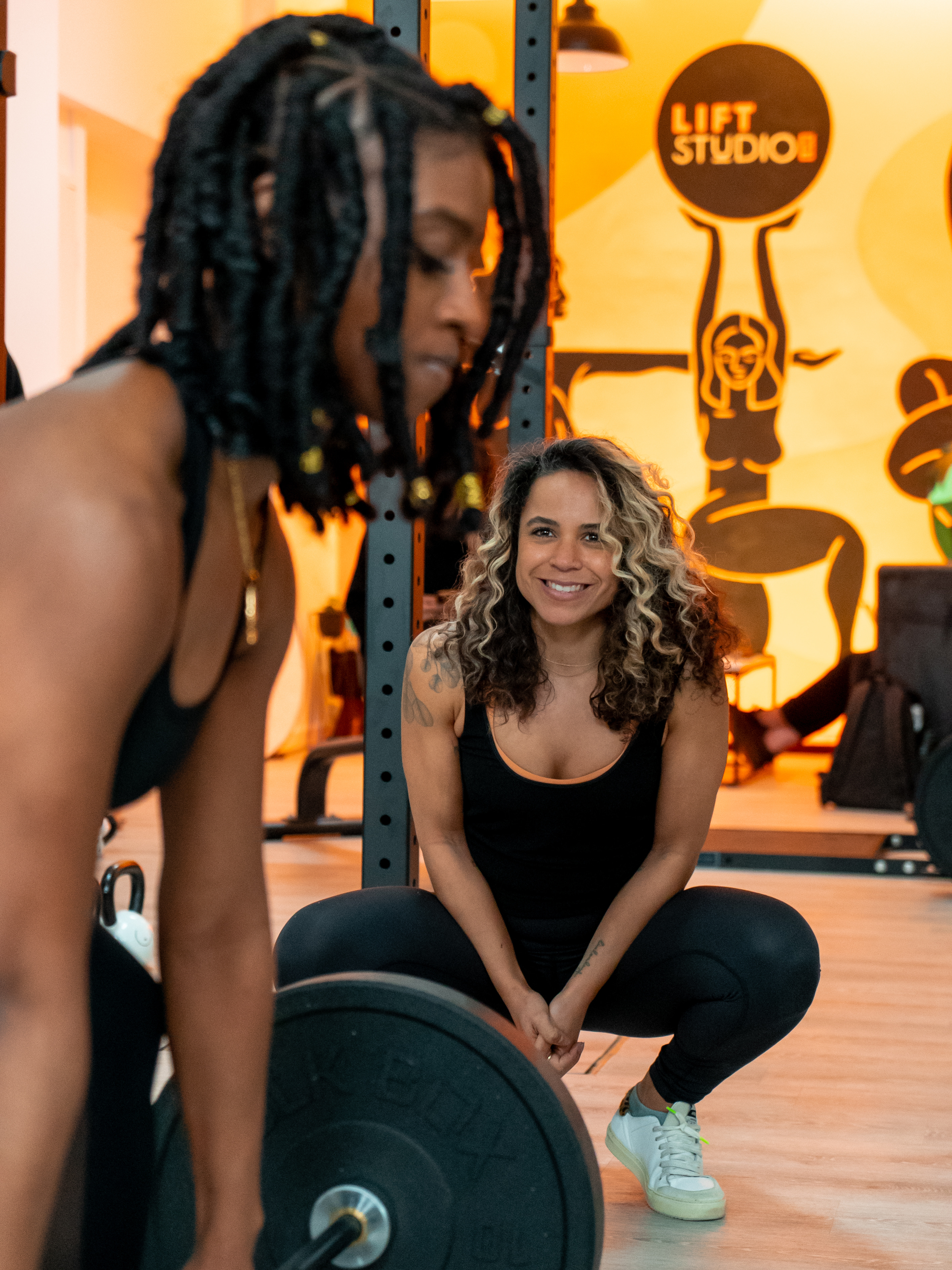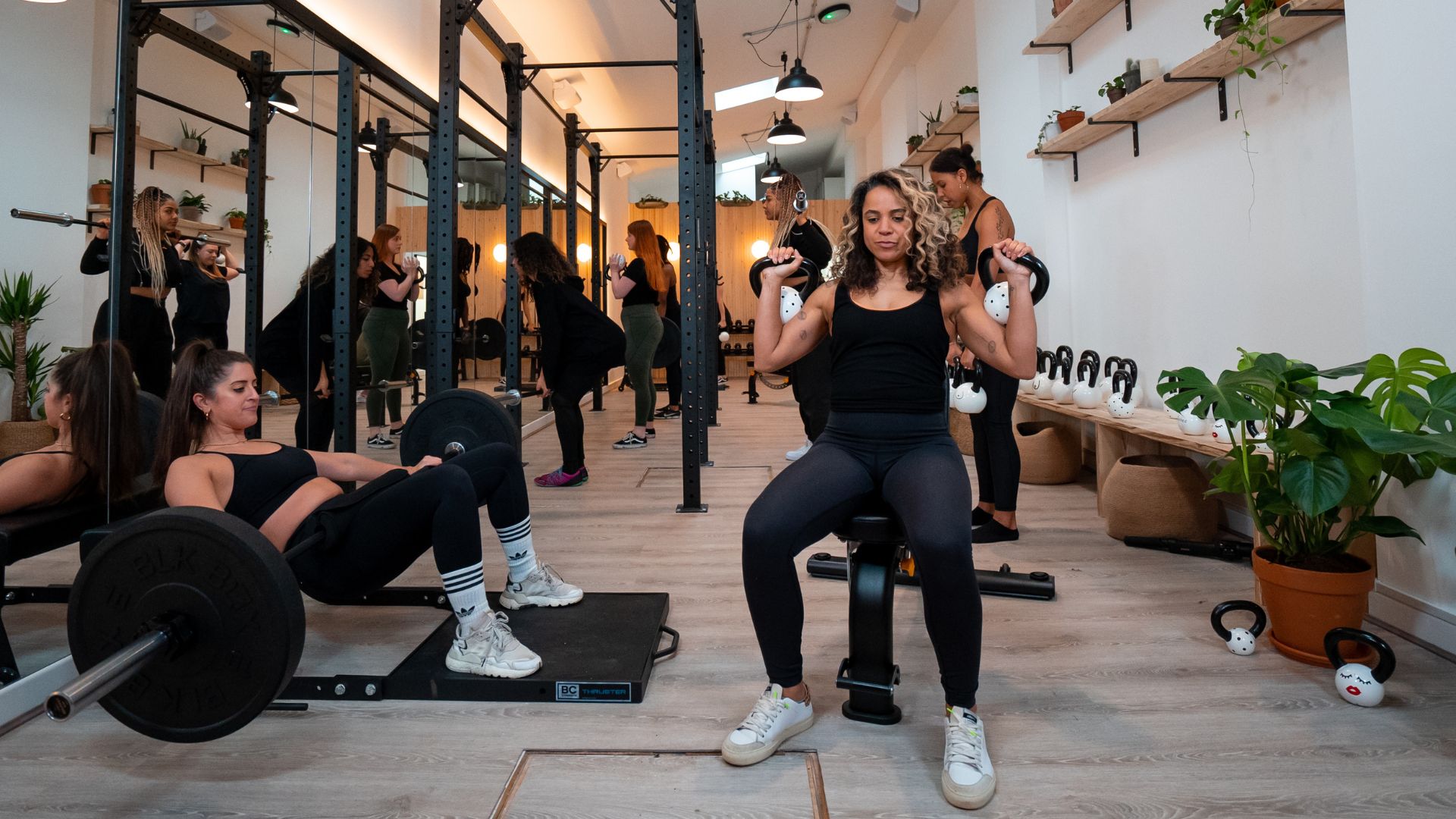
Once seen as the domain of muscle-obsessed jocks, weight training is increasingly becoming a part of everyone’s routine. And that is excellent news—both the CDC in the US and the NHS in the UK recommend doing strength training at least twice a week.
Women in particular can benefit hugely from including strength work in their exercise programme. It’s well documented that because of hormonal changes during menopause, women lose muscle mass and bone density, putting them at risk of osteoporosis and other conditions.
But as well as helping you stay healthy at any stage in your life, getting measurably stronger can also be hugely rewarding and empowering.
Personal trainer Mimi Bines co-founded Lift Studio LDN, a women-only weightlifting gym that aims to give women the knowledge and confidence to lift weights and enjoy the process of getting stronger. I spoke to her about why women should lift weights, how often, and how to get started.
What are the benefits of weightlifting for women?
The main reasons women should lift weights are no different to the reasons men should: Building muscle is good for you. If anything, women should be doing it more because genetically we’re born with less of it. And as we get older, we are fighting to keep the muscle that we do have. Having some kind of resistance training in your programme will definitely have huge benefits, helping you live longer and stay healthier.
How is weightlifting different from other forms of strength training?
Weightlifting is super-enjoyable because there’s tangible progress. Often with other forms of training, it’s just a mindless hour of getting through the exercises. The feeling of getting stronger gets people coming back. [At Lift] we’re there to really teach you how to do things and show you the resources and explain the science behind everything as well. So you can get your teeth into it.
Does weightlifting help you lose weight or reduce body fat?
You have to eat in a calorie deficit to lose any kind of fat. And you can choose where you build muscle but you can’t choose where you lose fat.
Many people go to the gym because they want to burn so many calories or lose this amount of weight or tone this part of their body, but this approach doesn’t make you feel good about yourself. While I’m not against these goals inherently, there are just so many other benefits to having process-driven goals.
If you are focusing more on your squat form and goals that show you what your body is capable of, then you will also be improving your body image alongside that without even realizing.
How often should you lift in order to benefit?
If you’re following a good program then I’d say two days a week is enough. With two days a week you can absolutely make good progress. But what’s more important is that you're training towards failure and your program fits your lifestyle. For instance, whether someone was doing two days a week or five days a week, I would give them a similar amount of volume, but I would just spread it over either two or five days. They wouldn’t necessarily be doing more or less, it would just mean it’s more spread out or more concentrated.
What’s a good way to start weightlifting?

The best place to start is with a small group program like we offer at Lift, or with a personal trainer. I’ve always believed in coaching. You learn so much, it makes everything so much easier and more enjoyable, and then you’ve got all the skills that you need. If you do a couple of months of that, then you’ve got a good foundation and the confidence to know what’s important and what’s not.
If you’re going to do it alone, then focus on five basic movements: a squat, a deadlift, a press, a pull and a bridge, and just nail those movements. Learn how to do them really well, and then just keep adding new things to your repertoire from there. But those exercises never get old, you never get too good for them, and there’s always something to improve.
What does it take to make weightlifting less intimidating for women?
That’s a good question. Honestly, even when I go to a new gym, I still feel slightly intimidated even though I know what I’m doing and I’ve been doing this for 10 years! I think it’s just having the knowledge that what you’re doing is correct, that your form is good. Having knowledge is powerful. Knowledge gives you confidence. Often men just have that confidence, they’re not necessarily doing it any better, but they go in and own the space.
Do you have any tips to help beginners?
If someone’s attempting a squat for the first time, I get them to sit on a box and then stand up again. That tends to put people in a really good position from the beginning.
If you’re going to the gym by yourself, I would just pick three exercises, practice the movements, and go and try to do them really well and do more sets of them. Don’t worry about making every session that you go into the most intense session ever. Just really focus on practicing it as a skill because that will help you lift better in the long run.
What are the advantages of going to a women-only gym?
It’s a less intimidating space. It’s a bridge between not having any experience in the weights room and being able to go in and have the confidence to lift by yourself.
It’s also a non-judgmental space. We focus a lot on teaching beginners, so you can rest assured that you’re not the only one there that is just learning. We’ve tried to make that a big emphasis: We’re all in the same boat. There’s a lovely sense of community. It’s a great place to make friends. Everyone has got similar goals to you, otherwise they wouldn’t be there.
Also, many women, including myself, have had bad experiences in male-dominated gyms. Whether it’s not being taken seriously or having things mansplained or people approaching you to try to help and touching you—it’s very off-putting. It’s just a safer space for women to be in. It’s a shame, because I don’t necessarily think it’s the solution in society, but I think it’s what we need right now.

What are the classes at Lift like?
It’s small-group personal training to build muscle and strength, essentially. We focus on barbell exercises, because you can never lift as much weight as you can with a barbell, but these are quite technical exercises, so we spend a lot of time working on form and teaching the fundamentals. We run our programmes for six weeks and you’re progressing over those six weeks. We give people logbooks so they can track everything that they’re doing. We film their reps and sets to make sure that their form’s looking really nice as well.
Are there any women who should not do weightlifting? People with back problems or pregnant women, for example?
With pregnancy, you definitely have to consult your doctor. You shouldn’t start new things while you’re pregnant, but if you’re someone that has been weightlifting, then absolutely people continue to lift throughout their pregnancy. Danni [co-founder of Lift] was teaching and lifting barbells while she was pregnant.
And if you’ve got back problems, even better, because weight training is a low-intensity exercise—you’re not jumping around. Everything is scalable, even to bodyweight, so no matter where you’re starting from, there’s an option for you.







